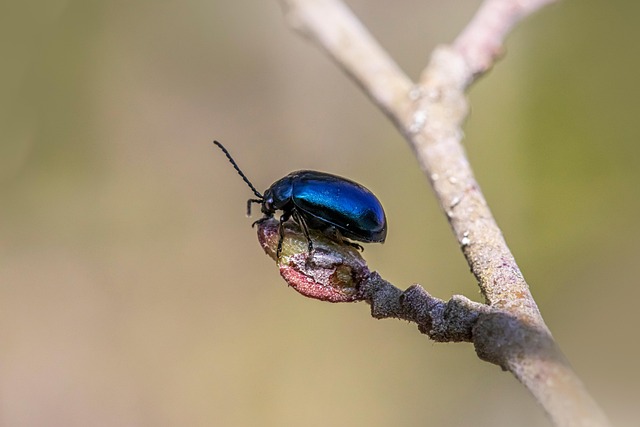Pillbugs, resilient damp-loving isopod crustaceans, can be managed in gardens and homes using natural remedies like neem oil, diatomaceous earth, or beneficial nematodes. A multi-pronged approach combining good garden hygiene, aromatic herbs as barriers, physical barriers like mesh fences or diatomaceous earth, and organic solutions like ladybugs and lacewings is effective for residential pillbug treatment. Prevention strategies include clearing debris, improving drainage, regular inspections, using natural deterrents, encouraging beneficial insects, reducing moisture, and deep but less frequent watering.
Tired of spotting pillbugs in your garden? Discover effective, natural remedies for managing these pesky critters without harsh chemicals. This guide covers everything from understanding their behavior and life cycle to implementing organic elimination strategies and preventive measures. Learn how to create barriers, use repellents, and maintain a pillbug-free yard with our comprehensive residential pillbug treatment solutions.
Understanding Pillbugs: Their Behavior and Life Cycle
Pillbugs, scientifically known as Armadillidiidae, are tiny isopod crustaceans that can be a nuisance in gardens and residential areas. They are most active during damp, cool weather, particularly in the spring and fall. These creatures have a distinctive appearance with hard outer shells and seven pairs of legs, allowing them to move quickly across plant surfaces. Understanding their behavior and life cycle is essential when it comes to effective natural remedies for management.
Pillbugs go through a simple life cycle, starting as eggs, hatching into nymphs that eventually mature into adults. They prefer moist environments and are often found in clusters beneath leaves, logs, or debris where they feed on decaying plant matter. In gardens, they might be attracted to vegetables, fruits, and ornamental plants. Recognizing their behavior patterns can help homeowners implement targeted residential pillbug treatments. Natural remedies include using neem oil, diatomaceous earth, or beneficial nematodes to disrupt their feeding and reproduction cycles.
Natural Repellents and Barriers: Protecting Your Garden
Natural Repellents and Barriers: Protecting Your Garden
When it comes to residential pillbug treatment, one effective approach is to employ natural repellents that can deter these pesky critters from infesting your garden. Pillbugs are attracted to moist, decaying plant matter, so maintaining good garden hygiene is key. Regularly removing dead leaves, trimming overgrown vegetation, and ensuring proper drainage can significantly reduce their habitat. Planting herbs like mint, lavender, and rosemary around the perimeter of your garden has also been shown to act as natural barriers, as pillbugs tend to avoid these aromatic plants.
Additionally, creating physical barriers is another practical method for residential pillbug treatment. Setting up fine mesh wire fences or using diatomaceous earth can prevent pillbugs from accessing your garden beds. These natural, non-toxic solutions not only keep pillbugs at bay but also promote a healthier, more balanced ecosystem within your garden.
Organic Methods for Elimination: Safe and Effective Solutions
Managing pillbugs organically is a preferred choice for many homeowners looking for a safe and effective residential pillbug treatment. Instead of resorting to chemical pesticides, several natural methods can help eliminate these garden pests while promoting a healthier ecosystem. One such method involves using beneficial insects like ladybugs and lacewings, which are known predators of pillbugs. Introducing these insects into your garden can help keep the pillbug population in check naturally.
Another organic approach is incorporating physical barriers and cultural practices. Creating a barrier around plants with diatomaceous earth or neem oil can deter pillbugs from feeding on your vegetation. Additionally, maintaining good garden hygiene by regularly removing plant debris and mulching helps reduce hiding places and food sources for these critters. These safe and effective solutions are not only environmentally friendly but also encourage a balanced ecosystem in your garden.
Prevention Strategies: Maintaining a Pillbug-Free Yard
To prevent a pillbug invasion, start by keeping your yard clean and free of debris. Pillbugs thrive in damp, shady areas with organic matter, so regularly clearing dead leaves, grass clippings, and other plant remnants can significantly deter them. Ensure proper drainage to avoid standing water, as this creates ideal breeding grounds. Regularly inspect your garden for any signs of pillbugs or their eggs and take action immediately to prevent an infestation from taking hold.
Consider using natural barriers like diatomaceous earth or neem oil around the perimeters of your garden beds. These substances can help repel pillbugs without causing harm to beneficial insects. Maintaining a balanced ecosystem by fostering populations of natural predators, such as spiders and ground beetles, is also effective in controlling pillbug numbers naturally. Regularly watering your plants thoroughly but less frequently can reduce their appeal to pillbugs, as they prefer moist environments.
Managing pillbugs naturally is an effective and eco-friendly approach for any garden owner. By understanding their behavior, implementing repellent barriers, and adopting organic elimination methods, you can create a thriving garden free from these pests. Preventative measures like regular yard maintenance and careful selection of plants resistant to pillbugs will further ensure a peaceful outdoor space. With these simple, natural remedies, you’ll be well-equipped to handle pillbug infestations and maintain a beautiful, healthy garden without resorting to harsh chemicals.
